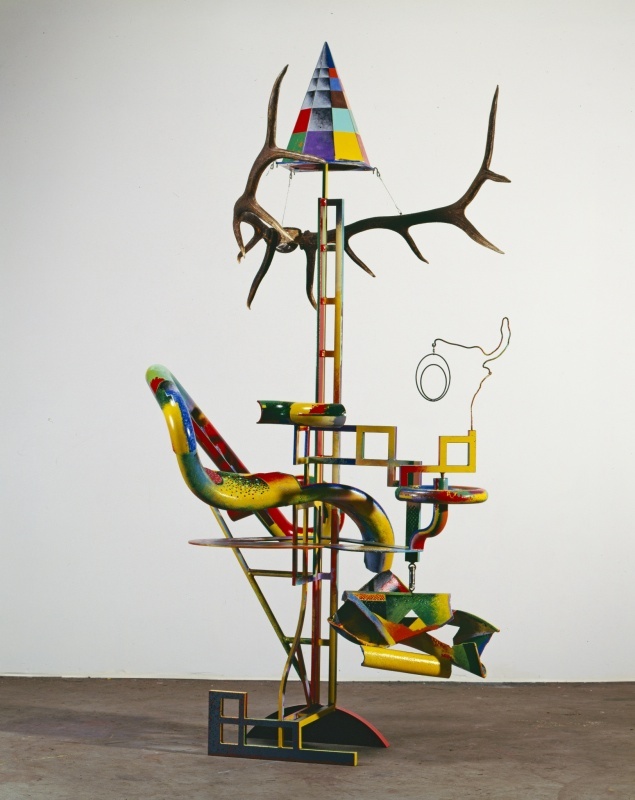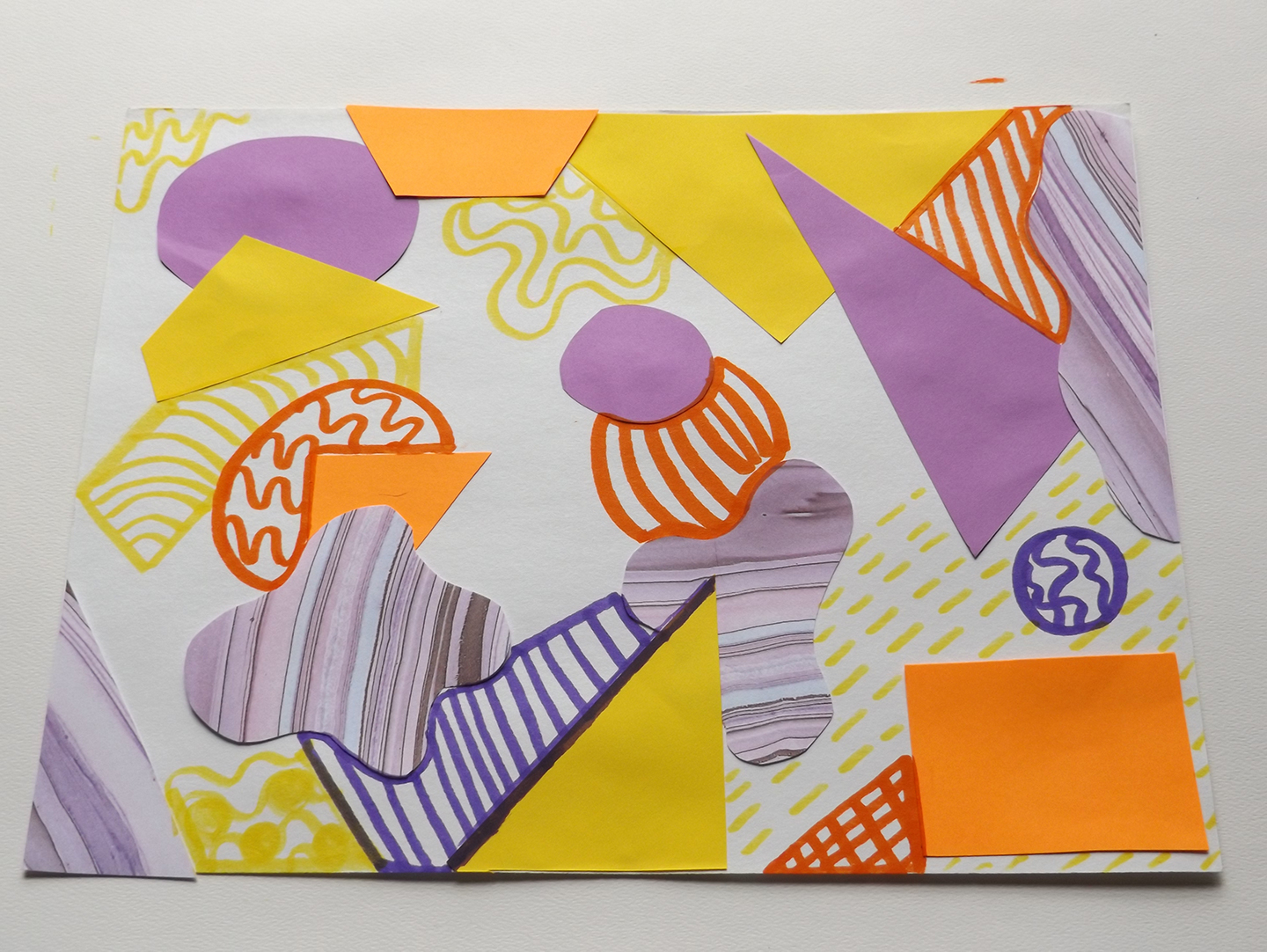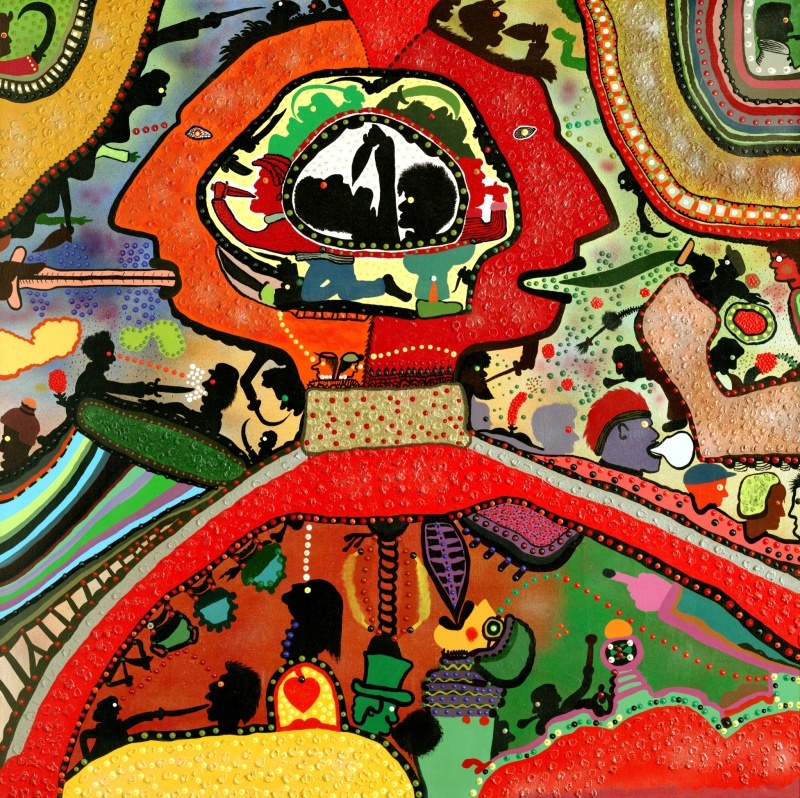Blog by Brian Hendershot; Lessons by Crystal Ruiz
Si estas buscando recursos en español desplázate abajo para obtener cada actividad.
Art and creativity are important at any time, for reasons that, as a reader of the Oculus, you are no doubt familiar with. They challenge our perspectives, compel us to empathize, and for many, offer a means of escape and relaxation. There's also a significant amount of evidence suggesting that arts education leads to increased civic engagement, greater social tolerance, and increased academic performance.
At the time of writing, we are the middle of quarantine, the consequences of which will no doubt stretch into the coming months, if not years. That's why we've decided to make some of our educational offerings temporarily free, starting with three lessons that are typically part of our School Programs. A brief intro into each lesson is available below, along with a brief, related art history lesson. A detailed lesson plan, which includes pictures and detailed steps, is available at the end of each section. Be sure to check out our YouTube page for more educuational, family-friendly content.
Paper Sculpture Challenge!

San Francisco artist Robert Hudson's work is characterized by its lack of symmetry and distinctive use of found objects. According to Hudson, he loves to be "in a position of being overwhelmed," a sentiment reflected in his art (Smithsonian, 2020). Before you begin, look at the work below with your child and ask the following questions:
- What kind of shapes do you see? Did you use geometric or organic shapes? Both?
- Describe your use of color. What colors did you use? Why?
- What do you like or dislike about the work? Why?
- Compare your artwork to Robert Hudson's piece, Outrigger. What looks different? What looks the same?
About the Artist
Robert Hudson studied at the San Francisco Art Institute during the early 1960s, a time when the second wave of Abstract Expressionism and Bay Area Figuration dominated the curriculum. While pursuing sculpture, he found special encouragement from faculty member Manuel Neri and sought to create large sculptures of welded steel. Like Neri, he aimed to create a dialogue with Expressionism and Figuration, and so began to paint his metal assemblages with bold colors.

Top Image: Robert Hudson (American, born 1938), Outrigger, 1983–1984. Enamel on steel, cast iron and antlers, 107 in. x 54 in. x 37 in. Crocker Art Museum Purchase, with funds from McCuen & Steele, Inc.
Hudson added found objects, like the distinctive antlers of Outrigger, to his works, creating seemingly irrational sculptures. Symmetry is avoided, and the sense of instability is intentional. The title of the work describes projecting supports on either boats or aircraft and is suggested by the sculptural that elements curve around and then thrust from the core lattice.
Hudson especially enjoyed the disjuncture between the flat and the fully round, which his decorative painting enhanced. Treating the surface as a canvas, especially a patterned canvas, Hudson flattens forms and draws attention to specific zones. However, the final result is open and full of movement as called for by the tenets of 20th-century Modernist sculpture.
Click HERE to see the full lesson plan. Haz clic AQUÍ para obtener este plan de estudio en español.
Cut It, Shape It, Glue It On!

Roy De Forest called art "one of the last strongholds of magic", a thought evidenced by his richly colored and textured fantasy worlds (Smithsonian, 2020). Recollections of a Sword Swallower, pictured below, was inspired by the life story and photographs in sword swallower Daniel P. Mannix’s autobiography Memoirs of a Sword Swallower. Before you start, examine the work below with your child and and ask them the following questions:
- What is mixed-media?
- How would you describe this artwork to someone who could not see it?
- What kinds of shapes do you see?
- Describe the lines in the artwork? Does the artist use straight, curvy, zig-zag, dotted or many different lines?
- Describe the artist’s use of color. How does the artist's choice of colors make you feel?
About the Artist
Roy De Forest’s approach to humor and development of autobiographical work using a highly personal visual vocabulary made him a prominent figure among Funk artists. His paintings often included alter-ego depictions, with dogs serving as his stand-in. This particular painting was inspired by the life story and photographs in Daniel P. Mannix’s autobiography, Memoirs of a Sword Swallower.

Roy De Forest (American, 1930–2007), Recollections of a Sword Swallower, 1968. Polymer and glitter on canvas, 62 1/4 in. x 62 1/2 in. Crocker Art Museum Purchase with funds from the Maude T. Pook Acquisition Fund.
His distinctive application of paint, which became known as “dots in candy-kiss relief”, was the result of acrylic paint squeezed directly from the tube onto the canvas. The application began with his early artistic forays into Abstract Expressionism. Beginning in 1958, while De Forest was completing his M.F.A., short strokes of pigment, applied with either the palette knife or brush, appeared in his oil paintings and mixed-media experiments on paper. By 1965, when he became a lecturer — and thereafter a faculty member at the University of California, Davis — De Forest's “candy-kiss” technique was well-known.
Aside from the flattened, cartoonish appearance of his figures, especially the silhouettes in this painting, De Forest enjoyed the naïve effect of his quite skilled production. Consistent throughout De Forest’s creation are bright, riotous displays of color. In his paintings and drawings, he used every manner of acrylic paint, marker, colored pencil, canvas, paper, and even glitter, as he does here. Over time, his decorative treatments extended to painted frames designed specifically to accompany each work.
Click HERE to see the full lesson plan. Haz clic AQUÍ para obtener este plan de estudio en español.
Lines Come to Life!

Claire Falkenstein began her career at the center of San Francisco’s art scene. In 1954, she made a major contribution to the art world with groundbreaking wire and fused glass works that explored the concept of space. Before you start your project, observe the artwork below and describe what you see. Then, ask yourself the following questions:
- What is a sculpture? What is the difference between shape and form?
- What forms do you see in this artwork?
- What kind of lines do you see? Does the artist use straight, curvey, zig-zag lines or many different lines?
- Describe the artist’s use of color. What colors have been used?
- What does this artwork remind you of?
About the Artist
Claire Falkenstein began her career at the center of San Francisco’s art scene. She was a painter and sculptor engaged with Pacific Coast Surrealism and a respected instructor at the California School of Fine Arts from 1947–49.

Claire Falkenstein (American, 1908–1997), Body Center Cubic, circa 1960. Gold and iron wire and fused glass, 29 in. x 29 in. x 29 in. Crocker Art Museum, gift of The Falkenstein Foundation.
She moved to Paris in 1950, where she continued her work on a smaller scale by making art jewelry. She mastered new techniques and forms, and increasingly used wire. By 1953, she had taken wire to unprecedented levels, constructing larger, complex nettings of filament, soldered wherever necessary. Her forms were open work pods or, in this instance, cubes. Falkenstein offered a radical solution to sculpture and space by manipulating material in such an original manner.
Her next major breakthrough came with the embedding of glass pieces into her lattices. At first these were wedged into place, wrapped by the wire, and held by pressure alone. In 1954, she learned kiln and torch techniques that allowed her to address the different melting points of her materials. Fragments of colored glass could be slumped amid the filaments, often fully encasing them. Further defining the fabric of space, glass also added a new sensuousness to the work.
With her nontraditional materials, organic forms, and innovative processes, Falkenstein’s aesthetic fit nicely with the Art Informel, an improvisational movement favored by the art critic Michel Tapié in his book Un Art Autre (1952). Tapié’s support cemented Falkenstein’s reputation abroad. In 1962, she left Europe to continue her career in Los Angeles, and by the 1970s, she had executed numerous commissions for monumental works.
Click HERE to see the full lesson plan. Haz clic AQUÍ para obtener este plan de estudio en español.
About the Authors:
Brian Hendershot serves as the Crocker's primary support editor, writer, and occasional audiovisual editor. Before joining the Crocker, he was the Head of Communications at the Museum of the Red River in Oklahoma. He also sat on the McCurtain County Historical Board of Directors and currently sits on the Crocker's MASS Action Committee. He received his MA in Communications at Drury University in Missouri.
Crystal Ruiz has a degree in Art Education with an emphasis in Studio Art from CSU Sacramento. The Art Education program at CSUS prepared her with the skills and knowledge she needed to work with students of all ages. She currently works as an Educator for the School and Teacher Programs and Coordinator for the Student and Community Exhibitions for the Crocker. She has come to serve numerous school districts and students of all ages to raise an awareness of and enthusiasm for human experiences through art. Sharing her knowledge and skills with students has and continues to be a wonderful experience.
As an artist, she has created a large body of works that experiments with a variety of mediums. When she’s not at home creating sculptures or educating at the Museum, she’s involved with the community of Sacramento, creating large murals and supporting local artist. Through her artwork and the work she does out in the community, she find it important to continue bringing awareness to the arts and to work with a diversity of people to help them share their stories and learn the history of our community through their art


